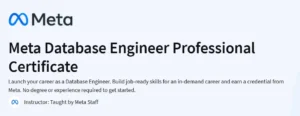What will you learn in AWS Developer Certification Training Course
Develop and deploy serverless applications using AWS Lambda and API Gateway
Manage AWS resources programmatically with the AWS SDKs and CLI
Configure and use core services: EC2, S3, DynamoDB, and RDS
Implement security best practices with IAM roles, policies, and Cognito
Program Overview
Module 1: AWS Cloud Essentials
⏳ 3 hours
Topics: Cloud computing fundamentals, AWS global infrastructure
Hands-on: Launch your first EC2 instance and explore the AWS Management Console
Module 2: AWS Fundamentals
⏳ 3 hours
Topics: Core AWS services overview, pricing models, and regions/endpoints
Hands-on: Create and configure an S3 bucket, upload/download objects
Module 3: AWS Console & Usage
⏳ 3 hours
Topics: Navigating the Console, resource tagging, cost monitoring
Hands-on: Tag resources and set up a billing alarm in AWS Billing Dashboard
Module 4: AWS SDK & CLI
⏳ 3 hours
Topics: AWS SDK setup, basic CLI commands, authentication methods
Hands-on: Use AWS CLI to manage S3 and DynamoDB tables
Module 5: Monitoring & Metrics
⏳ 3 hours
Topics: CloudWatch metrics, logs, alarms, and dashboards
Hands-on: Create custom CloudWatch alarm and dashboard for an EC2 instance
Module 6: High Availability
⏳ 3 hours
Topics: Load Balancers, Auto Scaling Groups, fault tolerance
Hands-on: Configure an Auto Scaling group behind an Application Load Balancer
Module 7: Analysis & Data Management
⏳ 3 hours
Topics: DynamoDB, RDS, Elasticache, and data migration strategies
Hands-on: Provision a DynamoDB table and perform CRUD operations via SDK
Module 8: Security & Networking
⏳ 3 hours
Topics: IAM roles/policies, VPC fundamentals, security groups, Cognito
Hands-on: Create a VPC with public/private subnets and configure IAM roles
Module 9: Deployment & Provisioning
⏳ 3 hours
Topics: CloudFormation templates, AWS CDK, blue/green deployments
Hands-on: Deploy a sample stack using CloudFormation and update via CDK
Module 10: Big Data & Analytics
⏳ 3 hours
Topics: Kinesis, Athena, Redshift, Glue, and data lake architectures
Hands-on: Ingest data with Kinesis Data Streams and query via Athena
Get certificate
Job Outlook
AWS Developers earn an average of $131,898 per year in the U.S.
Demand for cloud developers is growing at over 21% annually, outperforming average IT job growth
Roles include AWS Developer, Cloud Engineer, DevOps Engineer, and Solutions Architect
Skills in serverless, IaC, and high-availability design unlock opportunities across startups and enterprises
Specification: AWS Developer Certification Training Course
|
FAQs
- AWS Lambda can trigger or be triggered by third-party services using APIs or webhooks.
- Serverless functions can interact with external databases via SDKs or REST APIs.
- Integrates with CI/CD pipelines for automated deployments.
- Event-driven architectures allow Lambda to respond to changes outside AWS.
- Can be used with messaging platforms like Twilio, Slack, or Firebase.
- Use AWS Free Tier for learning and initial experimentation.
- Apply resource tagging to track usage and billing accurately.
- Employ auto-scaling to avoid paying for idle compute resources.
- Choose serverless services (Lambda, DynamoDB) for usage-based billing.
- Monitor usage via CloudWatch and set alerts for cost thresholds.
- AWS IoT Core can connect devices with Lambda functions for backend logic.
- Data from sensors can be stored in DynamoDB or S3 for analytics.
- Lambda triggers automate device management and alerts.
- Can integrate with AWS Greengrass for edge computing.
- Security features like IAM roles protect IoT device data streams.
- Use AWS SAM CLI or Serverless Framework to emulate Lambda locally.
- Mock event triggers to simulate S3 uploads or API Gateway calls.
- Connect local tests to DynamoDB Local for database simulation.
- Perform unit testing using standard Python or Node.js testing frameworks.
- Reduce cloud deployment costs by iterating locally before pushing changes.
- Cloud Solutions Architect designing scalable AWS infrastructure.
- DevOps Engineer managing CI/CD pipelines and cloud automation.
- Cloud Consultant advising businesses on cloud migration strategies.
- Data Engineer leveraging AWS analytics services for big data projects.
- Technical Trainer or Content Creator teaching AWS development practices.





